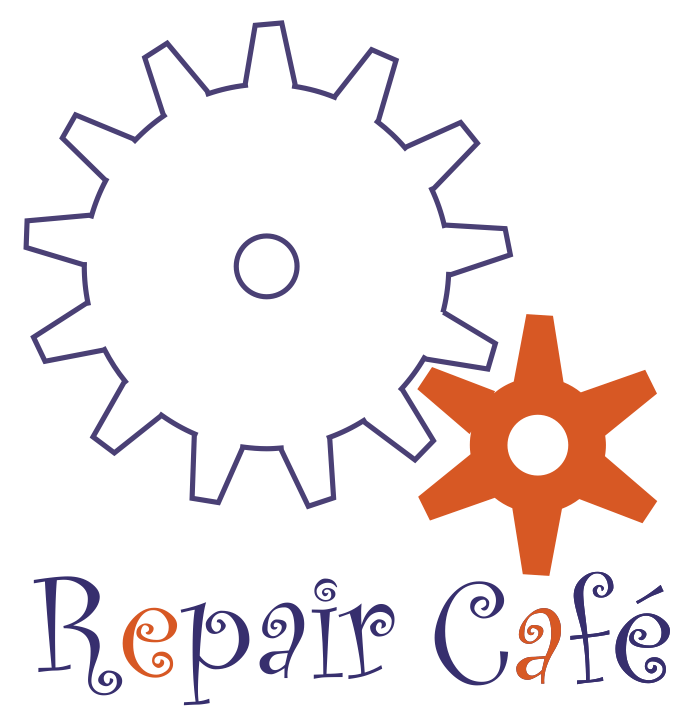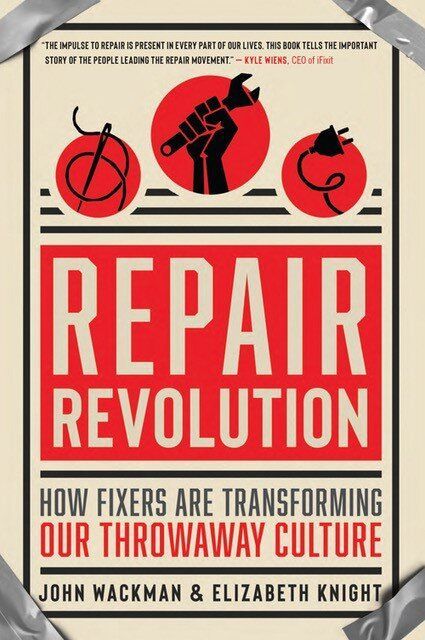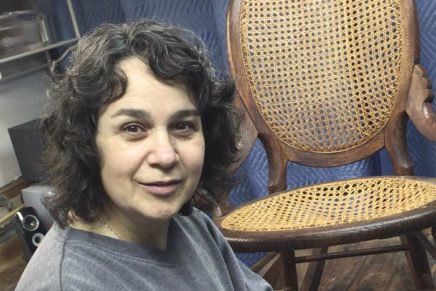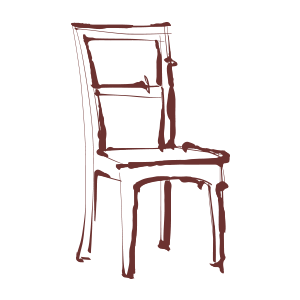PRESS
PRESS
PRESS
NEW PALTZ TIMES
Excerpts from a feature article that appeared April 30, 2019. Original version written by staff reporter Frances Marion Platt.
Got a family furniture heirloom that needs some TLC? A dresser whose drawers stick or have bowed bottoms, a wooden chair that’s pulling apart at the joints or whose cane seat is stretched and sagging? There’s a business operating out of a garage on Henry W. Dubois Drive in New Paltz designed with just your needs in mind. It’s called Furniture Fixitor, and owner Naomi Aubain has been providing such services to New Paltz and beyond for years.
But Aubain’s expertise in furniture rescue was much longer in the making. She grew up in Brooklyn, the daughter of an independent-minded painter, calligrapher and art teacher who also collected antiques, helped pioneer a gallery for women artists and “did not believe in the norm,” in Aubain’s words. “Everything was very unorthodox in my life.”
In other words, a single mom and two teenage girls turned a Brooklyn brownstone into a loft before lofts were even a thing in New York City. Aubain’s mother did have to partner with a male contractor friend, pretending that they were siblings because “in those days, women were not allowed to get a building permit.” The friend installed the electricity and plumbing, but when it came to the carpentry end, says Aubain, “We did it all ourselves.”
Back in Brooklyn, Aubain learned about furniture recycling early, “In those days, you could furnish a whole apartment by walking the neighborhood on a Sunday night”. That’s when people would put many useful items out on the curb for trash pickup.
In her early 20s, Aubain started a business partnership with a friend who worked part-time at the Garrett Wade Company in lower Manhattan, which carried “upscale woodworking tools and machinery.” The two did custom woodwork for New York City homeowners, largely consisting of “building loft beds in brownstones,” and using tight spaces to their best advantage. Over time, she says, “We got to design all kinds of bedrooms and kitchens.”
In the late 1970s, a landmark gig came along at the South Street Seaport Museum in lower Manhattan. They had acquired a four-masted sailing ship, the barque The Peking, with the intent of restoring it. Aubain was brought in to do the interior woodworking: “miles and miles of mahogany,” she laughs. She estimates that she personally did three-quarters of the work on the first and second mates’ cabins. These were relatively luxurious by shipboard standards: Each had a bunk, table and chair, built-in shelf, a place to hang clothing and a little couch. Moreover, the geometries of such a space are “really challenging. There’s no such thing as square or plumb.” Working out how to join vertical and horizontal panel molding all meeting in a corner, she says, “I learned a lot about compound angles on that job.”
Afterwards, she went to work for an architectural woodworking shop in Manhattan that catered to high-end clientele. “We worked for people on the Upper West Side who wanted custom built-in mahogany bookcases and solid wood doors,” she remembers. “My role was as a cabinetmaker, because I was the one who cared about that 64th of an inch.”
Now Aubain works full-time at giving a new lease on life to all kinds of beautiful, beat-up furniture. Her skillset includes such uncommon specialties as being able to replace or reweave cane and rush seats, and reupholster dining room chairs. “Chairs are my main thing,” she says, but her current project is a massive turn-of-the–century armoire whose veneer had separated, whose finish was badly faded due to sun exposure, and whose drawers and doors were falling apart. Gluing, shellacking and staining are all in a day’s work.
She recalls one heartbroken client whose beloved antique Hoosier cabinet got blown out of the open trailer in which she had been moving it. “It was not tied down. The wind took it and smashed it onto the road. It was her favorite piece of furniture. I did major surgery on it – literally rebuilt the whole bottom cabinet. I had to fabricate new legs, rebuild the drawer section, repair the doors, and much more. It turned out to be a labor of love. She said it came out better than before.”
Long experience in customizing furniture to fit small apartment nooks and ships’ cabins sometimes pays off as well. Aubain creatively reconstructed a child’s desk, covered with graffiti and stickers, into a more compact, convertible drawer unit with a fold-down work surface for a Christmas present from the girl’s father. He wanted her to be able to use it at college – with stickers intact. “I use mostly hand tools, because I’m not making new furniture anymore,” she notes. “And I have a deep understanding of how furniture is put together, which makes it easier to fix or repurpose them.”
If you’ve got a project that might benefit from Naomi Aubain’s remarkable experience, you can discuss it with her at (845) 522-2785. Her prices vary widely with the type of work needed. “What I tell everyone is to first send me a picture, then I’ll try to give them a ballpark estimate.” You can also chat with her at the Repair Café, where she’s a regular volunteer coach, anytime it comes to New Paltz.
Your cherished piece of furniture couldn’t fall in to better hands. Aubain knows how much these objects can mean to people, “Everything has a story,” she says.
Repair Cafe – What It Is
Repair Cafe's were started by journalist and mom Martine Postma in Amsterdam in 2009. There are now more than 2000 Repair Cafe’s in 33 countries. New York’s Hudson Valley, the Catskills and Capital District have more than 40 -- the largest concentration in the US, along with 30+ in Massachusetts.
Naomi has been a woodworking coach for the Hudson Valley Repair Cafe since the spring of 2018, regularly attending the one in New Paltz, and sometimes other towns as well. She says "It has been an exciting and rewarding experience meeting other repair coaches, working with an appreciative public, and helping to keep items out of the landfill. The wealth of expertise and the generosity of everyone involved with the repair movement is both heartwarming and inspirational."
The Repair Cafe is a free community meeting place where you can bring a beloved but broken item to be repaired or mended… for free, and by an expert who is also your neighbor.
Our goal is to make sure citizens can choose to repair and reuse instead of throwing away or buying new.
One catch: it is not a drop-off service. You bring your item and tell your “repair coach” what it’s not doing, and maybe be a part of how to get it to do it again.
The Repair Cafe aims to bring about a much needed shift in thinking. Repairing is caring - for our stuff, yes, but also for each other, for our community and our environment.
Why We Do It:
●To transform our throw-away economy, one beloved item at a time
●To reduce how much stuff goes into the waste stream
●To preserve repair know-how & skills, and pass them on (re-skilling)
●To show the people who have this knowledge that they are valued
●To feed our curiosity about the way things work, be creative & have fun!
●To build community and sustainability
Repair Cafe - Customer Appreciation
Si brought her chair to our Repair Cafe at the New Paltz Methodist Church last Saturday. Naomi Aubain, the "Furniture Fixitor" took it in hand. We'll call this one "Sad Chair" to "Happy Chair"!
Si says: "The chair is one of our dining table chairs that we’ve had for years and years—we received various chairs for free when we purchased a restored dining table. We’re not so sentimentally attached to the chair that we would pay to have it repaired professionally...but hated to throw it away if we could repair it enough to get more use out of it. I’ve appreciated the Repair Cafe so much over the past few years, to help with these kinds of repairs. I’m so impressed with the people there with these great hands-on skills that I wish I had, and appreciative of their generosity. Thank you so much for this wonderful community service!"
Naomi reports: "Rob Greene and I were able to fix the chair. The end dowel holding the top was broken. We put in a hidden nail as a pin to help strengthen the joint and then glued it together. We also put some glue on the other dowels as they were starting to come loose. Result: Happy Chair!"
Book:
Repair Revolution
With an essay by Naomi Aubain
I have been a woodworking coach for the Hudson Valley Repair Cafe since the spring of 2018, regularly attending the one in New Paltz, and sometimes other towns as well. In the summer of 2019, I was invited to participate in a survey of the repair coaches. Stemming from this work, I was asked to contribute to a book being written by two Repair Cafe organizers: John Wackman and Elizabeth Knight Moss.
The book is called Repair Revolution: How Fixers Are Transforming Our Throwaway Culture. Published in October 2020 by New World Library, San Francisco.
My contribution to the book is an essay called “How to Do a Simple Wooden Chair Repair”, appearing in the “Adventures in Repair” chapter. I am very excited, and honored, to be part of the effort of both the Repair Café in the Hudson Valley, and the fix it revolution talked about in this interesting and timely book.
John Wackman writes: “This is the first book to attempt to pull together the thousand threads of a repair movement (in addition to repair Cafes, it includes Fixit
Clinics, tool libraries, etc.) that is remarkably intergenerational, pervasive, culturally vibrant and rapidly growing. We see the repair movement as a re-emergence. To make that case, we will explore the historical and social context of repair. We’ll delve into the rich layers of meaning embodied in the ethos of repair and draw lessons about balancing our human economy with “ecological economics.” Many of the women and men who do these repairs have thought deeply about why they do it and why it matters, and we will share the eminently practical lessons they’ve learned.
The act of mending also profoundly mirrors the brokenness and healing we experience in human relationships, and connects with our sense of individual and social well-being. Some of this wisdom is philosophical and theological, expressed variously through the concepts of Tikkun Olam, Hebrew for “repair of the world,” the Zen aesthetic of wabi-sabi, the monastic practice of radical hospitality, or the indigenous worldview known as “re-weaving the basket of life.” The wisdom of repair is creative, common-sensical, and in a throwaway world, a radical act.”






